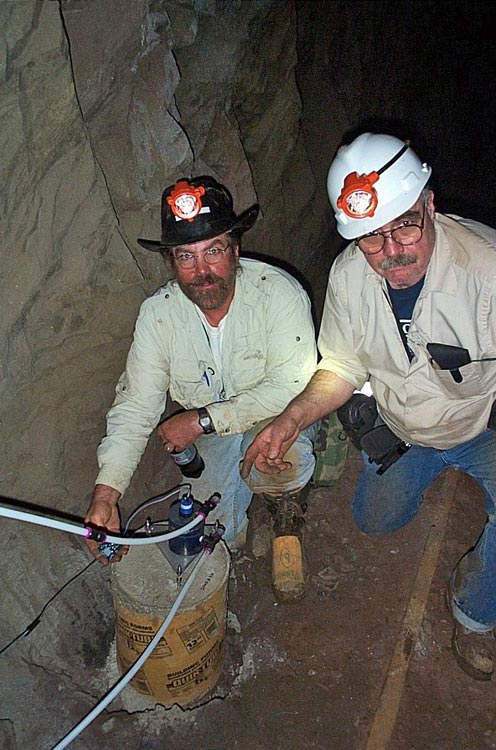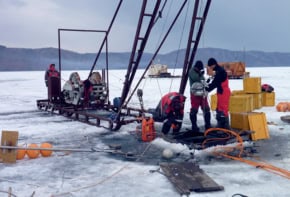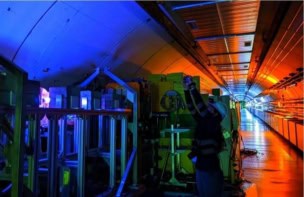
A study in the US has revealed that, apart from motion due to tides, seismic activity and other geophysical phenomena, the ground also moves entirely at random, at least over scales ranging from metres to kilometres. Vladimir Shiltsev came to this conclusion after using data from several particle accelerator facilities, where accurate information about the facility’s precise position is essential. The result confirms a simple equation he put forward to describe the motion and may also prove useful in the design of future particle accelerators.
Much of the early work on random ground motion was done by Russian researchers who had worked on the design of VLEPP, a planned electron–proton collider in Protvino, about 100 km south of Moscow. VLEPP was to have operated in the trillion electron volt range, comparable to the energy of CERN’s Large Hadron Collider, which is today the world’s largest and most powerful accelerator. Although VLEPP was scrapped with the collapse of the Soviet Union, Russian physicists continued to publish papers on random ground motion.
Back-of-the-envelope calculation
Shiltsev, now working at Fermilab, was just starting his career when some of these papers appeared, and has spent the past two decades trying to expand on some of the preliminary findings. This led him to create a simple, back-of-the-envelope calculation to estimate how the distance between two points will change over time. It involves multiplying the distance between two points along an accelerator by both the elapsed time and a coefficient describing the amount of random motion in a give locale, generally around 100 nm in any direction each minute. The square root of that number gives the rate of movement.
Shiltsev has now confirmed the accuracy of his calculation using alignment data from 15 accelerator facilities in Europe, Japan and the US collected over two decades. Such data, gathered from various sensors and laser trackers, is taken in the course of day-to-day operations. This is because even slight displacements of a magnet or other component can throw an accelerated beam of particles off-course and ruin an experiment.
The reason for the random motion of the ground, however, remains unclear. Shiltsev suspects that a fractal-like structure of the ground might offer an explanation. Shiltsev’s hypothesis is that the ground is analogous to a collection of tightly-packed blocks of similar shapes and varying sizes, with smaller blocks near the surface and larger blocks at greater depths. If each of these blocks jiggles at random, that would explain the effects seen in the alignment data, he says.
Tunnelling for fractals
Geophysicists have observed fractal patterns around active faults. However, more data, especially at varying depths, are needed to connect observed random ground motion to Shiltsev’s large-scale fractal patterns in the Earth. To collect such data, Shiltsev and Fermilab colleague Jim Volk are installing sensors in tunnels in the Deep Underground Science and Engineering Lab (DUSEL), which is being built 2 km below ground in South Dakota’s Homestake mine. DUSEL, which will be used for neutrino research and other experiments, should be operational by 2014.
Practical use of the simple equation confirmed by Shiltsev is unlikely to come until new linear accelerators such as the International Linear Collider (ILC) are built. “Ground motion is one of the major factors limiting the predicted performance of future linear particle colliders,” says Christophe Collette, a CERN researcher working on designs for the Compact Linear Collider (CLIC), an ILC-like machine that would stretch 50 km or more in a straight line. Such colliders would focus their particle beams to just a few nanometres across, requiring even better alignment than accelerators in use today.
The current work is published in Physical Review Letters.



